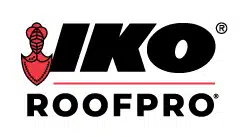
Did you know that most roofing issues happen during the winter? Heavy snow, ice dams, and extreme temperatures can take a serious toll on your roofing materials. But that’s not all. Here’s what winter does to your roof and what you can do to avoid a mid-winter roof repair.
Contents
Ice And Snow Build Up
As ice and snow start to build up on your roof, it can cause structural damage and water leaks that can lead to substantial, costly repairs. If you can’t access your roof safely to clean off any snow or ice that has formed after a heavy snowfall, call a snow removal company or roofing specialist.
Missing And Damaged Shingles
Extreme weather conditions and cold temperatures can cause your shingles to become brittle. When this happens, your shingles can easily crack and break under pressure from the wind and snow. This can eventually open up “Pandora’s box,” making your roof and home vulnerable to moisture and cold air if you don’t get them replaced.
Falling Branches
Big winter storms can fling heavy branches onto your roof. Just one branch can compromise the shingles and result in costly leaks. It’s recommended that you trim all branches within six feet of your roof. If you experience any damage, you need to contact a roofing company immediately to secure the area and prevent any further damage to your roof and interior.
Accumulation In Gutters
When a gutter becomes overburdened with snow and ice, it can cause them to bend and dislodge. Not only will it result in damaged gutters that will need to be replaced, but also can lead to melted water flowing down the side of your home and also underneath your roof surface. You need to keep your gutters clean from any frozen debris and excess snow.
Ceiling Leaks
If water cannot drain properly from the roof, it can gain access to your home through loose flashings, cracks, and damaged shingles. Once it enters, water will start to drip from your ceiling, causing issues with your paint and becoming a breeding ground for mold. Damage can be quite expensive to repair if you don’t have these issues addressed immediately.
Attic Condensation
The snow that blocks the vents on the roof can impede attic ventilation. Once it’s blocked, moisture and condensation will build up in the attic causing problems with the insulation, along with mold issues and structural damage. It can also result in higher utility bills if the blockage is not removed.
Roof Collapse
Excess snow that exceeds your roof’s weight limit can cause not only cracks but also structural damage and even a collapsing area. Rain, sleet, and ice can make a heavy snow load even worse, adding more weight and causing more damage. Talk to a roofing contractor who can help you understand how much weight your roof can support, and what you should do to prevent a roof collapse.
Don’t get stuck in the winter with a damaged roof. Instead, get a roof and attic inspection to ensure your shingles, flashings, gutters, and ventilation are in good shape. To avoid the range of potential damage that can occur from ice and snow, or if you experience a mid-winter roof emergency, call us at Roofmaster, we can help!









